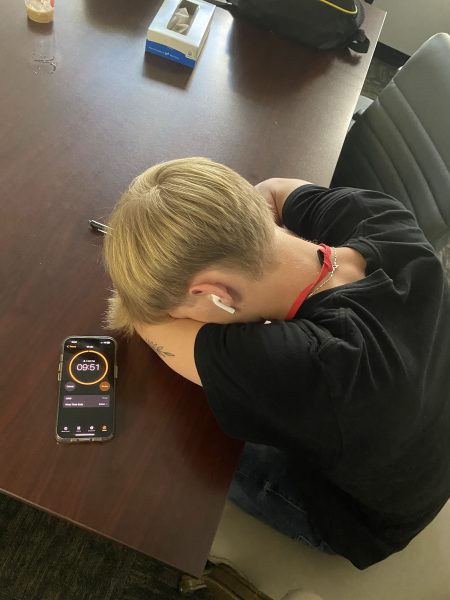Body Blues:
Information About Body Dysmorphia and How to Combat it
Body dysmorphia affects more people than anyone would think. People pick apart flaws only seen by themselves, avoid mirrors at all costs or obsess over what they see in the mirror.
Body dysmorphia, according to Mayo Clinic, is “a mental health condition in which you can’t stop thinking about one or more perceived defects or flaws in your appearance — a flaw that appears minor or can’t be seen by others.” This is closely related to both anxiety and OCD. This disorder can affect anyone, but especially teenagers and young adults.
There are two subtypes of BDD, body dysmorphic disorder, including muscle dysmorphic disorder and body dysmorphic disorder by proxy.
Muscle dysmorphia is mostly centered around the belief that the body isn’t muscular enough, or doesn’t contain enough muscle. This can lead to the obsession with the gym, counting calories and extreme meal planning, obsessively looking in mirrors, wearing many layers of clothes in order to disguise the body.
The difference between someone that’s healthy going to the gym to bodybuild or lose weight is simply their view on their body. The people that have this disorder are never satisfied with the looks of their body. Their goal is never met.
Body dysmorphic disorder by proxy is where someone is obsessed with another person’s flaws in their body. They are fascinated over this same person and an imperceivable flaw to an extreme degree. Sometimes they may think about this person and their flaw(s) for up to hours a day. A person may even reassure them of their flaw to compensate for what they see.
The person that is the focus of obsession may switch often, but they are always obsessive. It shows a cross with obsessive compulsive disorder, or OCD, due to their repetitive behavior. Something to be noted is that oftentimes, this person feels remorse or guilt for their own mania.
The problem may arise because of family history involving body dysmorphia, negative self image, or even an atypical brain function possibly due to low levels of the chemical seratonin in the brain.
In order to get the diagnosis for BDD, the symptoms must be extreme. An abnormal amount of concern and concentration on an almost nonexistent flaw(s) must be present. Someone’s life has to be altered beccause of their view on their body.
There are a few basic treatments for BDD, both involving musc dysphora and BDD by Proxy, including cognative behavior therapy or CBT and medications.
Some choose to go to the gym to work off this “insecurity.” This is a problem because it is, quite literally, in their own head. You aren’t able to change what isn’t there.
This disorder can often resemble a prison for those that are affected by it, enslaved by their own brains. Being forced to look at something that isn’t ruined or flawed, but seeing nothing but mistakes is a flaw.
What’s important to remember is that there are treatments and things that are able to help with this negative mindset. This doesn’t have to affect everyday life, so long as people get the help necessary to overcome it.












